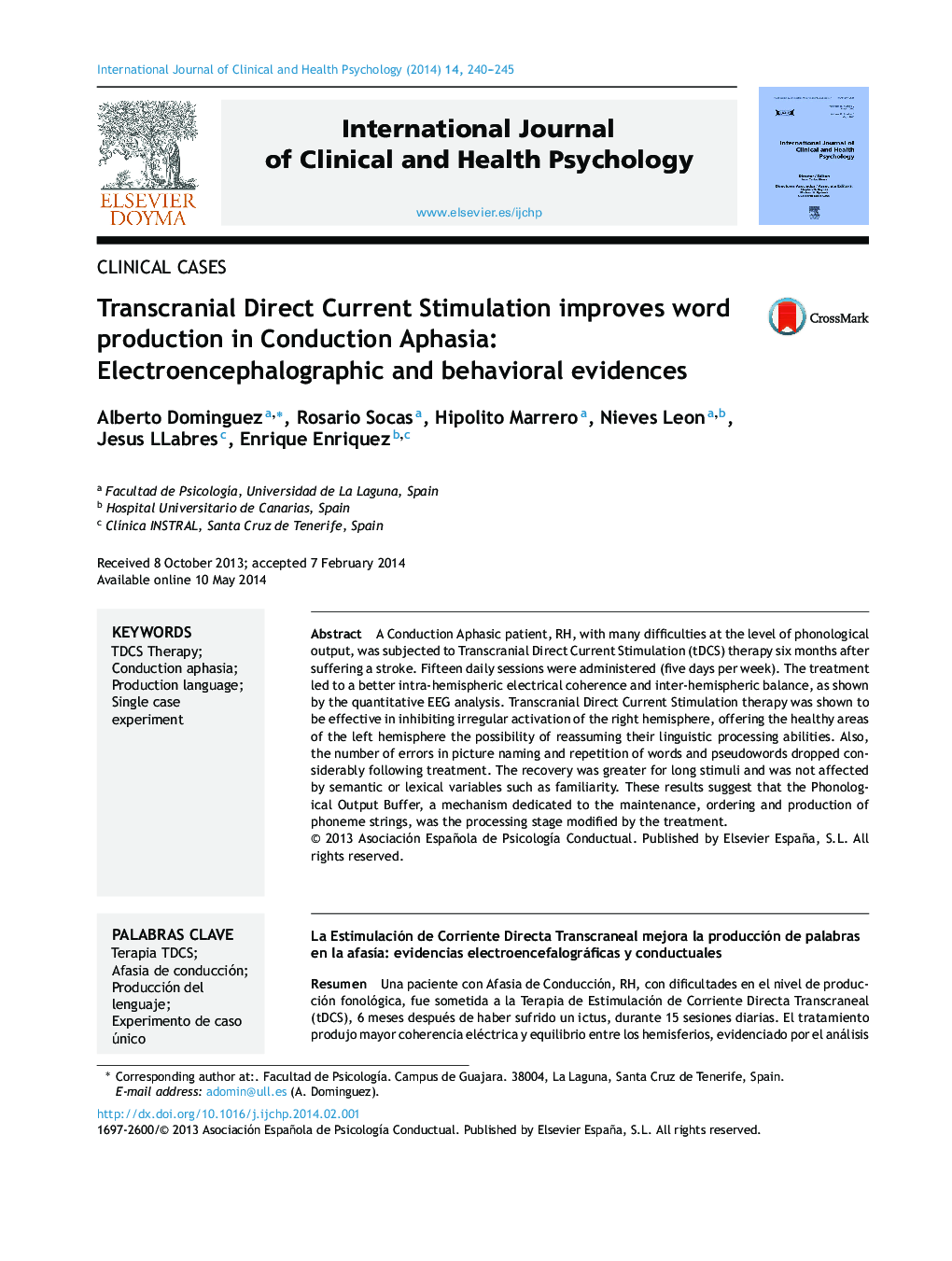| Article ID | Journal | Published Year | Pages | File Type |
|---|---|---|---|---|
| 879987 | International Journal of Clinical and Health Psychology | 2014 | 6 Pages |
A Conduction Aphasic patient, RH, with many difficulties at the level of phonological output, was subjected to Transcranial Direct Current Stimulation (tDCS) therapy six months after suffering a stroke. Fifteen daily sessions were administered (five days per week). The treatment led to a better intra-hemispheric electrical coherence and inter-hemispheric balance, as shown by the quantitative EEG analysis. Transcranial Direct Current Stimulation therapy was shown to be effective in inhibiting irregular activation of the right hemisphere, offering the healthy areas of the left hemisphere the possibility of reassuming their linguistic processing abilities. Also, the number of errors in picture naming and repetition of words and pseudowords dropped considerably following treatment. The recovery was greater for long stimuli and was not affected by semantic or lexical variables such as familiarity. These results suggest that the Phonological Output Buffer, a mechanism dedicated to the maintenance, ordering and production of phoneme strings, was the processing stage modified by the treatment.
ResumenUna paciente con Afasia de Conducción, RH, con dificultades en el nivel de producción fonológica, fue sometida a la Terapia de Estimulación de Corriente Directa Transcraneal (tDCS), 6 meses después de haber sufrido un ictus, durante 15 sesiones diarias. El tratamiento produjo mayor coherencia eléctrica y equilibrio entre los hemisferios, evidenciado por el análisis de EEG. La Terapia tDCS demostró ser un procedimiento efectivo para inhibir la activación irregular del hemisferio derecho, y posibilitar a las áreas sanas del hemisferio izquierdo el reasumir sus habilidades de procesamiento lingüístico. Asimismo, el número de errores en nombrado de dibujos y repetición de palabras y pseudopalabras se redujo significativamente después del tratamiento. La recuperación fue mayor en los estímulos largos, y no se vio influenciada por variables léxicas o semánticas como la familiaridad. Estos resultados sugieren que el Buffer de Salida Fonológico, un mecanismo dedicado al mantenimiento, secuenciación y producción de fonemas, fue el estadio de procesamiento modificado por el tratamiento.
